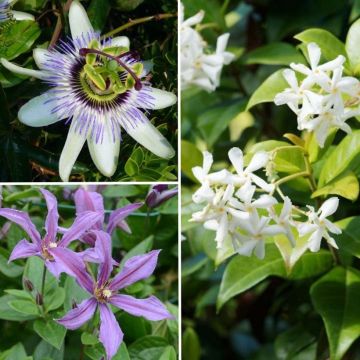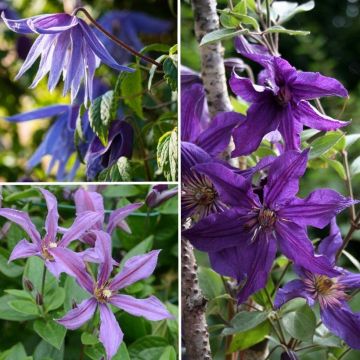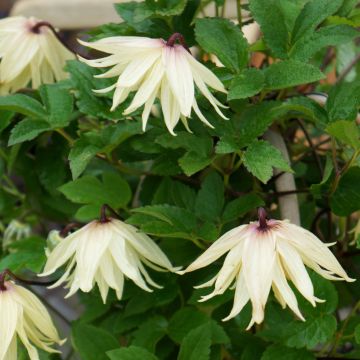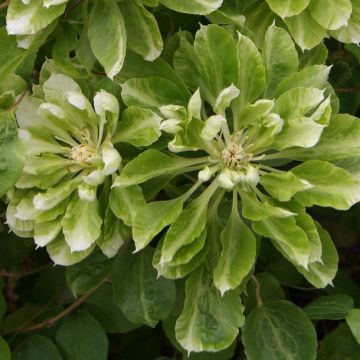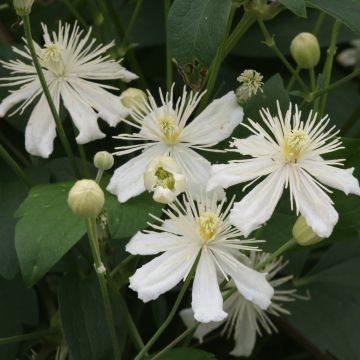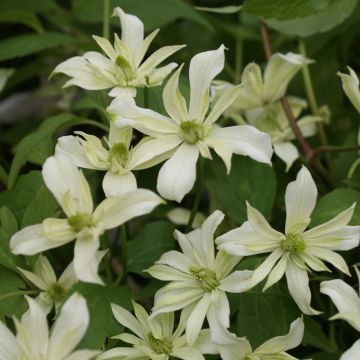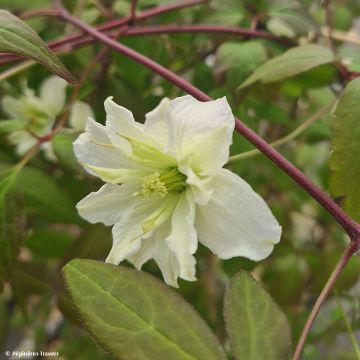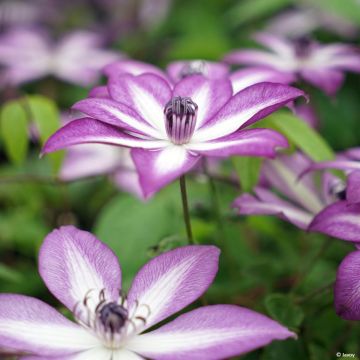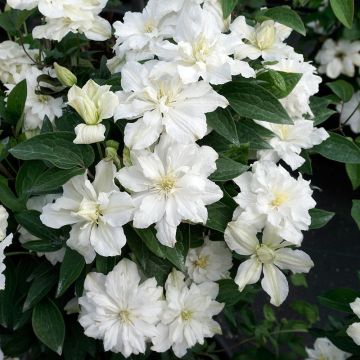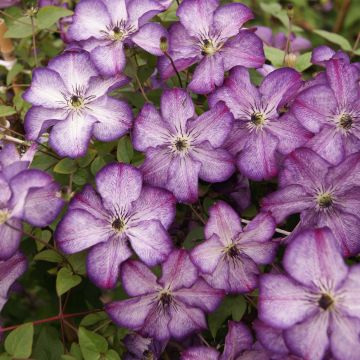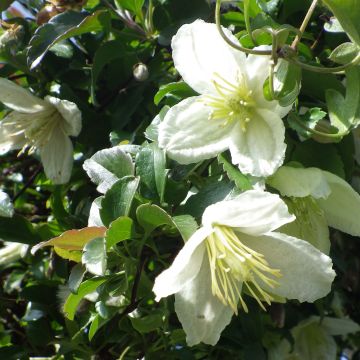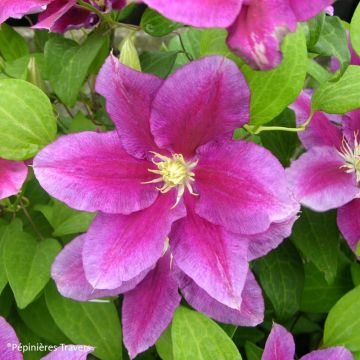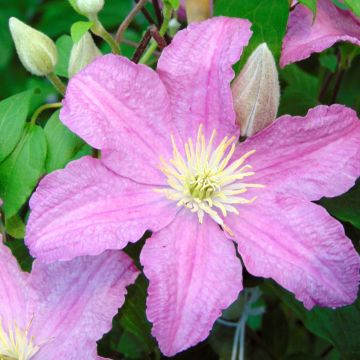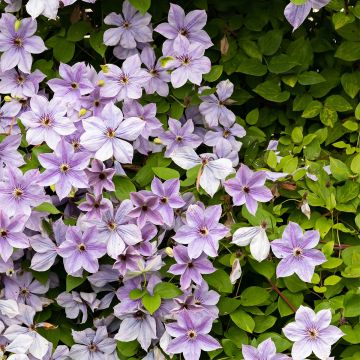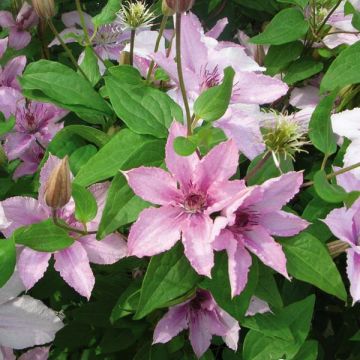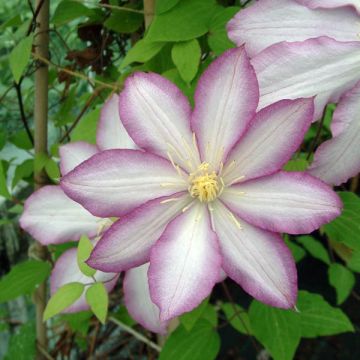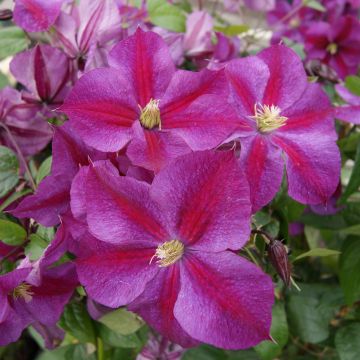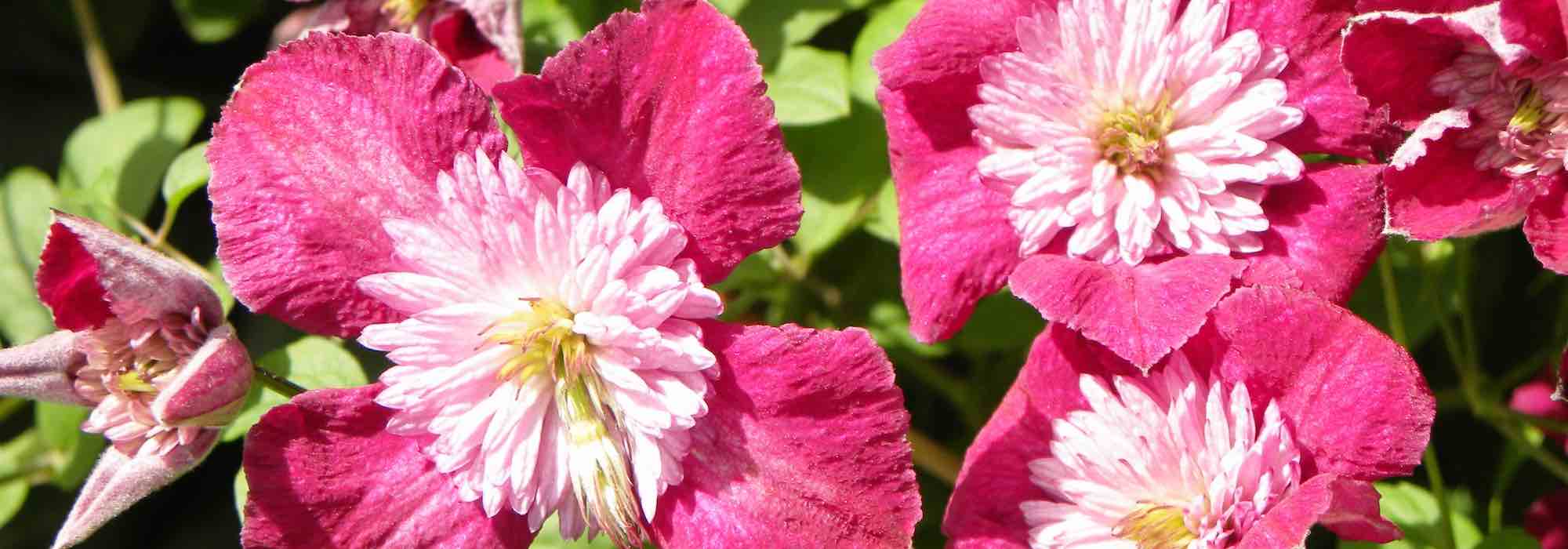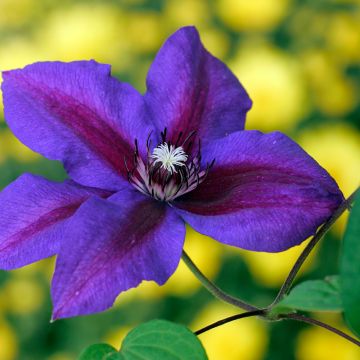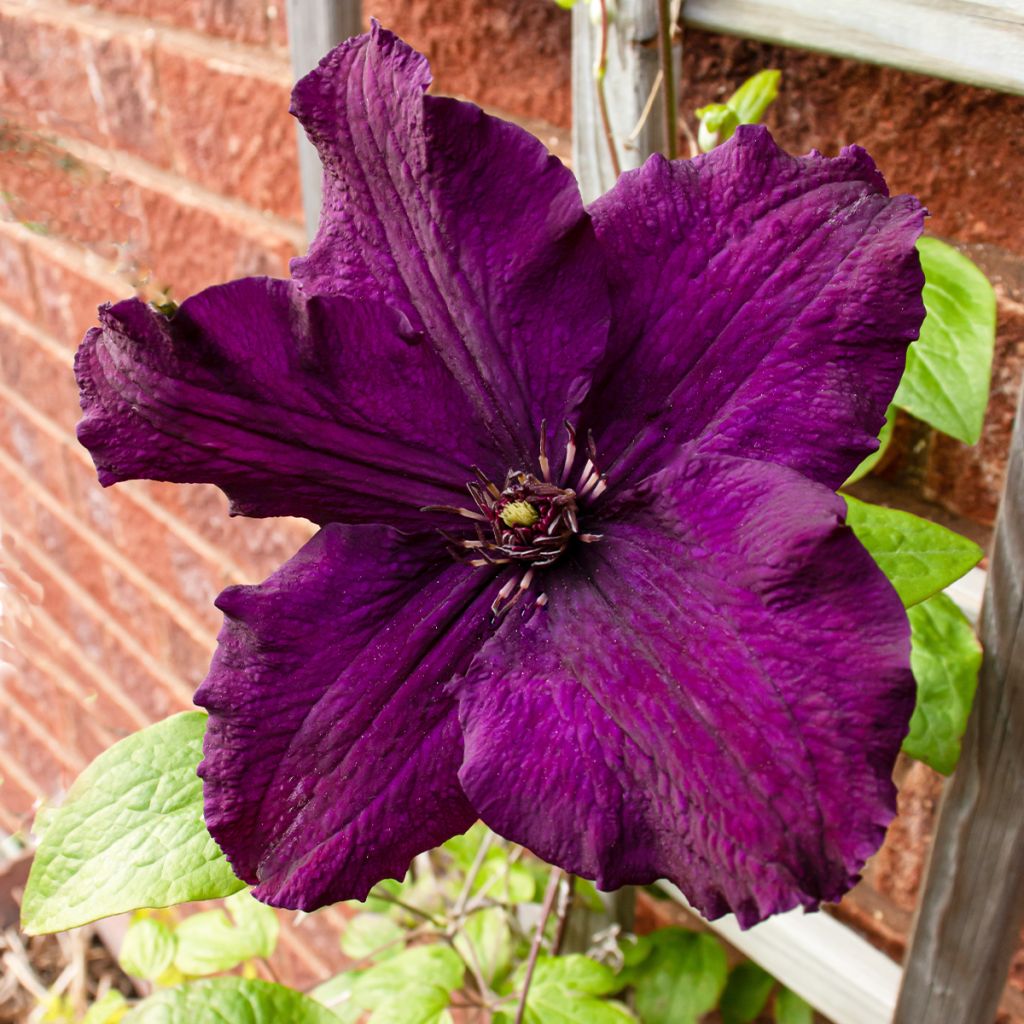

Clematis Rasputin


Clematis Rasputin
Clematis Rasputin
Clematis x hybrida Rasputin
Hybrid Clematis
Special offer!
Receive a €20 voucher for any order over €90 (excluding delivery costs, credit notes, and plastic-free options)!
1- Add your favorite plants to your cart.
2- Once you have reached €90, confirm your order (you can even choose the delivery date!).
3- As soon as your order is shipped, you will receive an email containing your voucher code, valid for 3 months (90 days).
Your voucher is unique and can only be used once, for any order with a minimum value of €20, excluding delivery costs.
Can be combined with other current offers, non-divisible and non-refundable.
Why not try an alternative variety in stock?
View all →This plant carries a 6 months recovery warranty
More information
We guarantee the quality of our plants for a full growing cycle, and will replace at our expense any plant that fails to recover under normal climatic and planting conditions.
Would this plant suit my garden?
Set up your Plantfit profile →
Description
Clematis Rasputin is a variety with some of the darkest flowers in its category. The plant is not very tall and particularly floriferous from a young age. Its flowers have wide, wavy, velvety petals of a very dark violet, almost black, enhanced by a purple central line and violet anthers. This variety blooms from June to September, on the current year's shoots. A semi-shaded exposure will enhance the colour of the flowers.
Clematis belong to the Ranunculaceae family. They are found in both hemispheres, particularly in Europe, the Himalayas, China, Australia, and North and Central America. The 'Rasputin' variety is a complex hybrid, of German origin, obtained in 2001 by Willem Straver in Emmerich. It is a compact, floriferous, perennial, hardy, woody climbing plant that will not exceed 3m (10ft) high, with a minimum spread of 1m².
This clematis bears star-shaped, 8 to 10cm (3 to 4in) diameter flowers, which appear on the current year's shoots from June to September. The flowers are solitary or grouped in cymes and particularly abundant. They are erect and have 4 to 6 thick and velvety, wavy petals, overlapping at the base, dark purple when they first bloom, becoming almost black, over time. The stamens are a dull white with a violet base, and they have violet anthers. The flowers are followed by decorative silvery grey feathery seed heads that persist until winter. The leaves are dark green, composed of 3 to 5 entire leaflets. This clematis clings to its support or host plant through petioles transformed into tendrils. Its deciduous foliage falls in autumn.
Clematis like to have their feet in the shade and their heads in the sun. Plant your clematis alongside your climbing roses or ramblers to extend the flowering of your walls and pergolas until the end of summer. Climbing honeysuckles will also be good companions, their light and often fragrant flowers complementing the large scentless star-shaped flowers of the clematis. The genus Clematis is rich in diversity, with varieties available in all colours, shapes, and sizes. Take advantage of their easy cultivation to give your garden a romantic and bohemian touch. 'Rasputin' loves to weave through bushes and grows very well in a large pot.
Clematis Rasputin in pictures
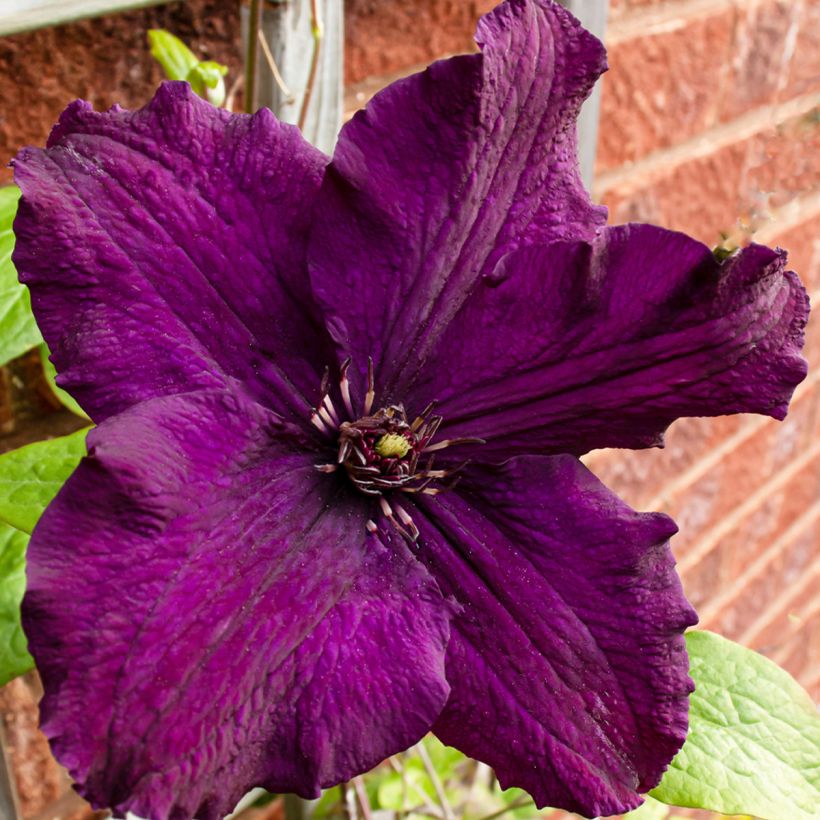

Plant habit
Flowering
Foliage
Botanical data
Clematis
x hybrida
Rasputin
Ranunculaceae
Hybrid Clematis
Cultivar or hybrid
Other Clematis A to Z
View all →Planting and care
Clematis Rasputin will appreciate the light shade near a tree, with its feet in the shade. Plant it in a fertile, humus-rich, moist, and well-drained soil, shading the roots and the base of the stem (with a flat tile, for example). Clematis can wither in overly wet soil. Plant it by covering the root ball with 3 cm (1in) of soil, in soil worked to a depth of 20 cm (8in), lightened with good compost and coarse sand. After planting, cut back the clematis stems to about 30 cm (12in) from the base above a healthy pair of buds. Water regularly during the first few weeks, but be careful not to let the water stagnate as this can cause fungus to develop at the neck. Mulch all clematis in February with garden compost or well-decomposed manure, avoiding direct contact with the stems. Train the stems, without crushing them, until the plant clings for itself. Clematis also like to grow freely on neighbouring plants. Prune in March to 30 cm (12in) from the ground.
After a few years, cover the base of your climbing clematis with a small mound of soil, to reduce the risk of clematis wilt while promoting the growth of vigorous new shoots from the crown. Voles and caterpillars can attack clematis and devour the stems. Aphids and greenhouse whiteflies are also potential pests.
Planting period
Intended location
Care
Planting & care advice
This item has not been reviewed yet - be the first to leave a review about it.
Similar products
Haven't found what you were looking for?
Hardiness is the lowest winter temperature a plant can endure without suffering serious damage or even dying. However, hardiness is affected by location (a sheltered area, such as a patio), protection (winter cover) and soil type (hardiness is improved by well-drained soil).

Photo Sharing Terms & Conditions
In order to encourage gardeners to interact and share their experiences, Promesse de fleurs offers various media enabling content to be uploaded onto its Site - in particular via the ‘Photo sharing’ module.
The User agrees to refrain from:
- Posting any content that is illegal, prejudicial, insulting, racist, inciteful to hatred, revisionist, contrary to public decency, that infringes on privacy or on the privacy rights of third parties, in particular the publicity rights of persons and goods, intellectual property rights, or the right to privacy.
- Submitting content on behalf of a third party;
- Impersonate the identity of a third party and/or publish any personal information about a third party;
In general, the User undertakes to refrain from any unethical behaviour.
All Content (in particular text, comments, files, images, photos, videos, creative works, etc.), which may be subject to property or intellectual property rights, image or other private rights, shall remain the property of the User, subject to the limited rights granted by the terms of the licence granted by Promesse de fleurs as stated below. Users are at liberty to publish or not to publish such Content on the Site, notably via the ‘Photo Sharing’ facility, and accept that this Content shall be made public and freely accessible, notably on the Internet.
Users further acknowledge, undertake to have ,and guarantee that they hold all necessary rights and permissions to publish such material on the Site, in particular with regard to the legislation in force pertaining to any privacy, property, intellectual property, image, or contractual rights, or rights of any other nature. By publishing such Content on the Site, Users acknowledge accepting full liability as publishers of the Content within the meaning of the law, and grant Promesse de fleurs, free of charge, an inclusive, worldwide licence for the said Content for the entire duration of its publication, including all reproduction, representation, up/downloading, displaying, performing, transmission, and storage rights.
Users also grant permission for their name to be linked to the Content and accept that this link may not always be made available.
By engaging in posting material, Users consent to their Content becoming automatically accessible on the Internet, in particular on other sites and/or blogs and/or web pages of the Promesse de fleurs site, including in particular social pages and the Promesse de fleurs catalogue.
Users may secure the removal of entrusted content free of charge by issuing a simple request via our contact form.
The flowering period indicated on our website applies to countries and regions located in USDA zone 8 (France, the United Kingdom, Ireland, the Netherlands, etc.)
It will vary according to where you live:
- In zones 9 to 10 (Italy, Spain, Greece, etc.), flowering will occur about 2 to 4 weeks earlier.
- In zones 6 to 7 (Germany, Poland, Slovenia, and lower mountainous regions), flowering will be delayed by 2 to 3 weeks.
- In zone 5 (Central Europe, Scandinavia), blooming will be delayed by 3 to 5 weeks.
In temperate climates, pruning of spring-flowering shrubs (forsythia, spireas, etc.) should be done just after flowering.
Pruning of summer-flowering shrubs (Indian Lilac, Perovskia, etc.) can be done in winter or spring.
In cold regions as well as with frost-sensitive plants, avoid pruning too early when severe frosts may still occur.
The planting period indicated on our website applies to countries and regions located in USDA zone 8 (France, United Kingdom, Ireland, Netherlands).
It will vary according to where you live:
- In Mediterranean zones (Marseille, Madrid, Milan, etc.), autumn and winter are the best planting periods.
- In continental zones (Strasbourg, Munich, Vienna, etc.), delay planting by 2 to 3 weeks in spring and bring it forward by 2 to 4 weeks in autumn.
- In mountainous regions (the Alps, Pyrenees, Carpathians, etc.), it is best to plant in late spring (May-June) or late summer (August-September).
The harvesting period indicated on our website applies to countries and regions in USDA zone 8 (France, England, Ireland, the Netherlands).
In colder areas (Scandinavia, Poland, Austria...) fruit and vegetable harvests are likely to be delayed by 3-4 weeks.
In warmer areas (Italy, Spain, Greece, etc.), harvesting will probably take place earlier, depending on weather conditions.
The sowing periods indicated on our website apply to countries and regions within USDA Zone 8 (France, UK, Ireland, Netherlands).
In colder areas (Scandinavia, Poland, Austria...), delay any outdoor sowing by 3-4 weeks, or sow under glass.
In warmer climes (Italy, Spain, Greece, etc.), bring outdoor sowing forward by a few weeks.






























